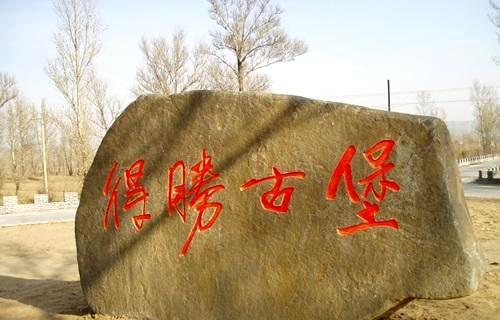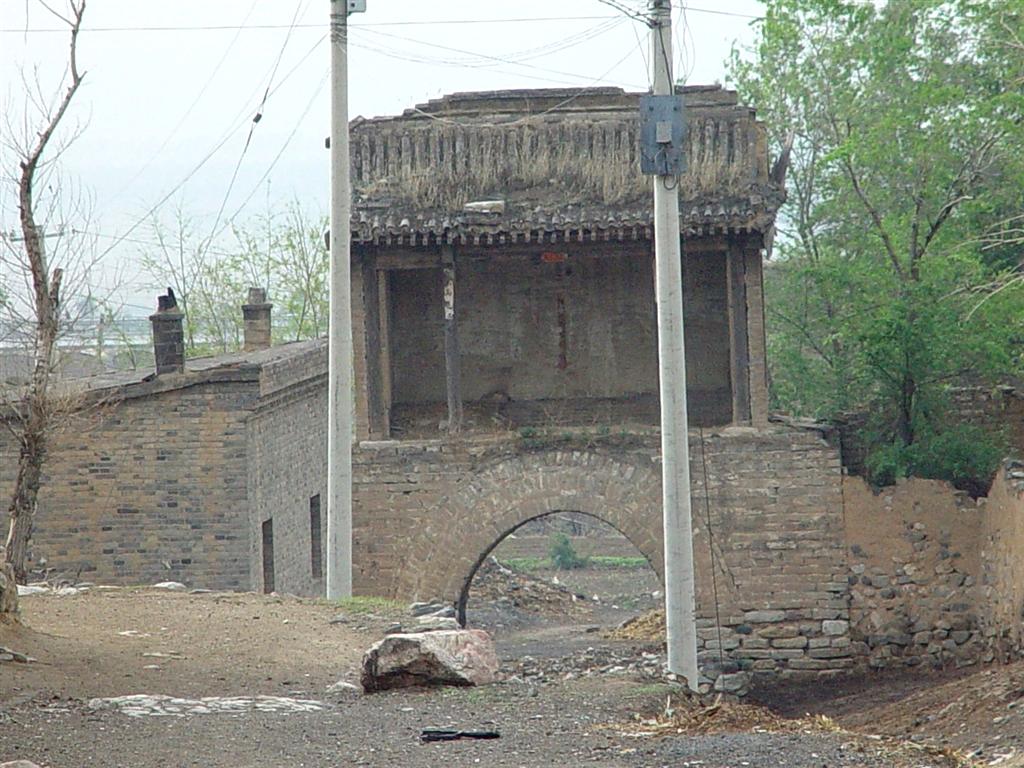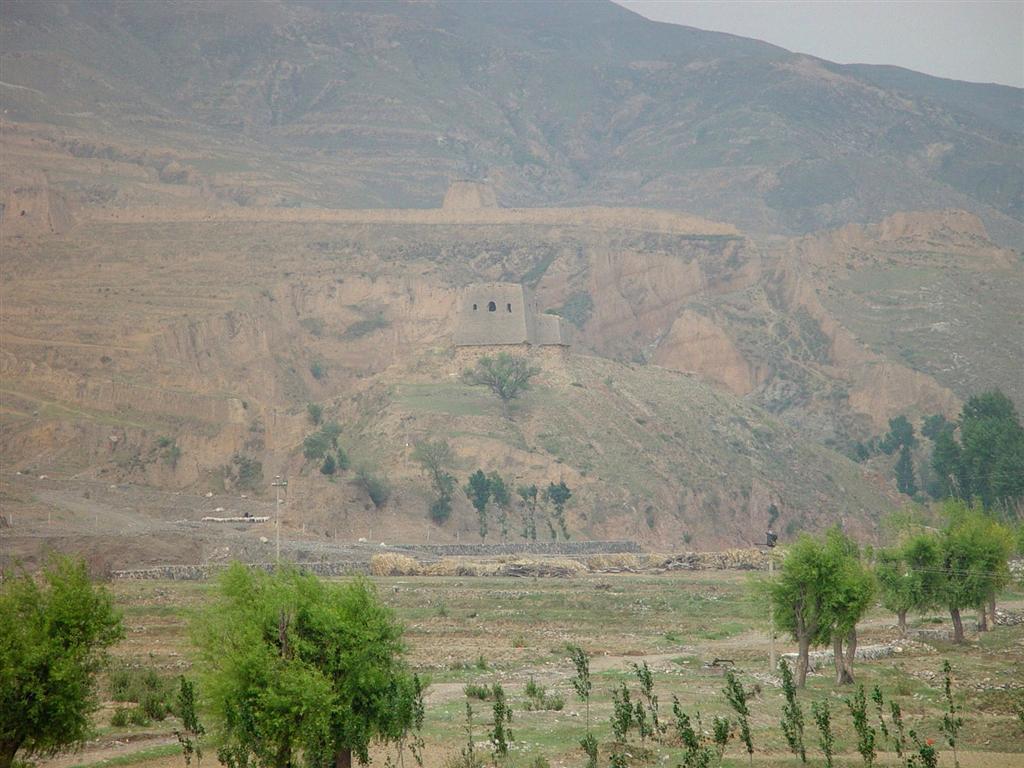Recommended Reviews
- Getting around Lijiang. Dont stay in the Old Towns more than 2 days, there is nothing to do. KRISS Oct 9, 2013 05:46
- 2013 Beijing Temple Fair BENNYLAU Feb 26, 2013 03:29
- Malaysian traveling from KUL - LAX vis Shanghai PVG ZATI_DY Jan 3, 2013 20:15
The Fading Great Wall - Datong Desheng Old Fort
- Views: 3831
- |Vote: 0 0
- |Add to Favorites
- |Recommend to Friends
In Nov. 2009, we were in Shanxi, windy and chilly. At the Zhanxian bus station near Datong Railway Station of Shanxi, we hopped on a bus running to Fengzhen, Inner Mongolia. After about 40mins, the bus arrived at the border between Datong, Shanxi and Jining, Inner Mongolia, just the site of Desheng Fort, one of the five so-called "Five Forts of Border Town. After we alighted, a big stone up in the loess with four words: De Sheng Gu Bao jumped into my eyes. I looked around but saw nothing of the old fort. When I looked eastward, I saw the city wall and city gate of the old fort with no one around from afar. I walked towards the Old Fort. Blasts of wind were blowing in the wild the northern Datong, and yellow sands were dancing in the air, telling the story of the great wall in the past years. After 2 kilometer's hike, we finally reached Desheng Bao.
We thought the Old Fort was with all kinds of structures, such as the Horse Road, the Barbican Entrance (Wengcheng), the beacon towers, the loft city walls and etc, but our eyes failed us. There was only one thing there: the huge city gate with no tower. It was obvious that the city tower has disappeared in the tide of the history. The city gate, up on which is the battlement as that of the Great Wall, was built with green bricks. The city gate reached to 8 to 9 meter, but was rammed with losses. It is heard from the old that Desheng Fort was erected during the Jiajing Region and restored during the Wanli Region. The surface of the city gate was bricks, and the south city gate was beset with a 2-meter-wide and 1-meter-high stone. From the delicate basso-relief on the main city gate we could tell that the craftsman in the Ming Dynasty had profound art accomplishment. Yet with no preservation the delicacy fades with the times. The best conserved parts of the Desheng Fort must be the main gate. On the two walls up in the gate, even the words of Chairman Maozedong could be found.
After I got up from the main gate, I ascended to the top of the city tower from the by-side. The top area was in a relatively good condition, paved with green bricks. Looking from the back of the city tower, the urban houses were in order, but weary and old. Passing this fort, I came across another one, different from the first. It was a deserted fort with farming land inside. This second fort has no brick city walls, but with obvious tracks of a brick strip. The local old people I ran into told that the bricks were stolen by the local residence to build their own house. Walking north along the city wall, I just found the city fort is in severe aeolian erosion. In the left front of the fort, there appeared another fort, much more deserted and damaged than the second one. There was even no city gate to the south side. The locals said it used to be a fair town.
I suppose that "De Sheng Bao" referred to these three old forts. At around 17:00, I was on the bus back to Datong, ending my trip of Datong Ming Dynasty Great Wall trip. Maybe the Deshengbao Great Wall will be gone 400 years later. Farewell to the fading Great Wall!
 |
We thought the Old Fort was with all kinds of structures, such as the Horse Road, the Barbican Entrance (Wengcheng), the beacon towers, the loft city walls and etc, but our eyes failed us. There was only one thing there: the huge city gate with no tower. It was obvious that the city tower has disappeared in the tide of the history. The city gate, up on which is the battlement as that of the Great Wall, was built with green bricks. The city gate reached to 8 to 9 meter, but was rammed with losses. It is heard from the old that Desheng Fort was erected during the Jiajing Region and restored during the Wanli Region. The surface of the city gate was bricks, and the south city gate was beset with a 2-meter-wide and 1-meter-high stone. From the delicate basso-relief on the main city gate we could tell that the craftsman in the Ming Dynasty had profound art accomplishment. Yet with no preservation the delicacy fades with the times. The best conserved parts of the Desheng Fort must be the main gate. On the two walls up in the gate, even the words of Chairman Maozedong could be found.
 |
After I got up from the main gate, I ascended to the top of the city tower from the by-side. The top area was in a relatively good condition, paved with green bricks. Looking from the back of the city tower, the urban houses were in order, but weary and old. Passing this fort, I came across another one, different from the first. It was a deserted fort with farming land inside. This second fort has no brick city walls, but with obvious tracks of a brick strip. The local old people I ran into told that the bricks were stolen by the local residence to build their own house. Walking north along the city wall, I just found the city fort is in severe aeolian erosion. In the left front of the fort, there appeared another fort, much more deserted and damaged than the second one. There was even no city gate to the south side. The locals said it used to be a fair town.
 |
I suppose that "De Sheng Bao" referred to these three old forts. At around 17:00, I was on the bus back to Datong, ending my trip of Datong Ming Dynasty Great Wall trip. Maybe the Deshengbao Great Wall will be gone 400 years later. Farewell to the fading Great Wall!
Comments (0)



 Copyright © 1998-2025 All rights reserved.
Copyright © 1998-2025 All rights reserved.